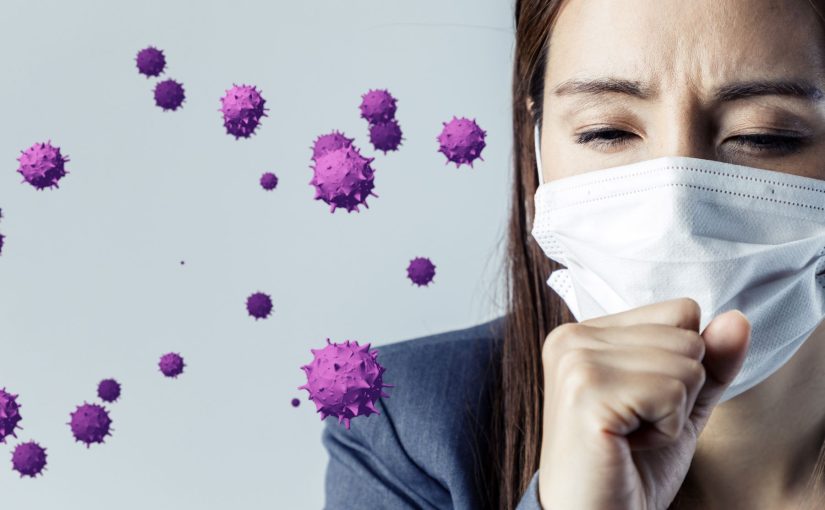Table of Contents
What Is The Best Type of Air Purifier For Viruses?
Photocatalytic Oxidation. See Air Oasis
Photocatalytic Oxidation is a technology that is able to remove up to 99% of all airborne viruses, allergens, bacteria, mold spores, and VOCs.
 Different types of air purifiers have different strengths and use different types technologies to exhibit their strengths.
Different types of air purifiers have different strengths and use different types technologies to exhibit their strengths.
The most popular air cleaners use HEPA filters to filter or strain out pollutants from the air.
HEPA filters are made from a very dense highly stranded fiberglass that is engineered to capture airborne contaminants as small is .3 microns.
And though they are the standard even throughout the medical industry, they are not able to capture and destroy viruses.
Simply because viruses are .004 to .01 microns, as much as a hundred times smaller than bacteria. HEPA filters could not capture anything nearly that’s small.
Virus air purifiers
Require more than just a filter to be able to reduce and deactivate airborne germs.
 Ultraviolet light
Ultraviolet light
The technology that is most often used in air purification to minimize bacteria and viruses is Ultraviolet light.
Ultraviolet light will destroy virtually every contaminant that it is focused on. Including viruses.
But the problem with UV is that it requires being targeted on a subject for
a necessary length of time to kill it.
And getting airborne can contaminants to stand in front of a UV light until they are dead is not exactly an easy task.
But there is a way of using ultraviolet light that can be targeted and the result is much greater then using UV alone.
Photocatalytic oxidation is a technology that targets ultraviolet light onto a hydrated catalyst containing titanium oxide.
The result is hydroperoxides.
 This is where it gets interesting.
This is where it gets interesting.
Hydroperoxide is the gas form of hydrogen peroxide.
Hydrogen peroxide is the solution that you use to clean a cut or an abrasion.
Its purpose is to keep a wound from getting infected.
Imagine being able to take a bottle of hydrogen peroxide and spraying it on each and every bacteria and virus cell in the airstream.
This is essentially what a photocatalytic oxidation air purifier can do.
Keeping you healthy by keeping your air uninfected by airborne Invaders.
PCO even cleans countertops and tables because of the method of delivery. A PCO air purifier basically spritzes every square foot of a room with hydroperoxide ions.
Another big plus is they do not require the regular exchange of filters that HEPA air purifiers do.
But as you probably already realize, air purifiers that do not use filters typically manufacturer at least some ozone as a by-product.
 Photocatalytic Oxidation
Photocatalytic Oxidation
is no different.
Ultraviolet light is one method of creating ozone. And since PCO air purifiers employee ultraviolet light, they do create ozone as a byproduct.
Though most PCO air purifiers do not create enough ozone to be considered a ozone generator, and you may find that some companies will not even mention ozone because of this fact, it does not change the fact that they do.
These air air purifiers are meant to be used in the square footage they were purchased for. If a PCO air purifier that was purchased for 750 sq ft is used in a room that is only 100 square feet, the result will be ozone overload.
This is easily remedied by not using the air purifier outside of its boundaries.
Also many air purifiers have a “while you’re away” setting. This simply means that you can get a better result by turning it on high while you’re out of the house and letting any ozone dissipate before you return.
Though it only takes about 30 minutes for ozone to completely dissipate, there is no reason why you shouldn’t give it longer.
Most people know that ozone is a very effective air cleaning tool but it can be dangerous to breathe.
That is why ozone generators are specifically required to be used only when there is no people pets or plants in the vicinity.
If you’re going to use your PCO or ionic air purifier on high, I would stick to the ozone generator formula. And let it do its thing while you’re not there.
 PCO induct purifiers
PCO induct purifiers
Another great application for photocatalytic oxidation is in duct HVAC air purification.
The central heat and air unit in the home is often the main source and contributor of indoor air pollution.
Not only does the climate inside the unit make for one of the best environments for mold to grow because of the lack of sunlight and the abundance of moisture in the form of condensation,
it also acts as the perfect delivery system for contaminants not only originating within the machine but coming from other parts of the house.
Photocatalytic oxidation is one of the best ways to keep the inside of your HVAC ductwork clean.
Many induct air purifiers are basically a UV lamp that is focused on the condenser coils and on the drip pan inside the HVAC housing.
This works because that is where mold can begin to grow. By targeting the UV on it, it can stop it before it has a chance to get started or thrive.
But UV is not as good of a solution is PCO because with photocatalytic oxidation you not only have the capacity of targeting the UV lamp straight onto your drip pan and coils, you also are targeting the UV lamp onto the titanium oxide catalyst that creates a blanket of hydro peroxide ions that move throughout your in duct unit and through your house.
This essentially turns your HVAC unit into a whole house air purifier that is introducing and cleaning the ambient air that you breathe each and every time the unit kicks on.
Also a big plus with induct air purifiers is that any ozone created in the process generally dissipates in the system before it has a chance to get into the ambient air.
DIY Hand Sanitizer
Here’s a tip I learned from my wife who has to have hand sanitizer on hand at all times because she is a school teacher.
A easy do-it-yourself hand sanitizer is to mix equal parts of 99% rubbing alcohol and aloe vera together.
Those are both super cheap ingredients that you can get at the dollar store. She uses old soap canisters to keep it in but a spray bottle would do just as well.
While keeping your air clean is important, keeping your hands clean is also very important and having the capacity to sanitize them anywhere you need especially in the classroom is he must.
She says that if the smell of alcohol is too overbearing you can mix in a couple of drops of tea tree oil which is also a great all natural hand sanitizer. Or a drop or two of essential oil will do the same thing.
 Summary.
Summary.
The best type of air purifier for viruses in my opinion is photocatalytic oxidation. This brand is the best.
The technology is basically like taking a bottle of hydrogen peroxide and disinfecting the air like you would a cut or an abrasion on your hand.
Though they are an ionic air purifier that creates a low level of ozone as a by-product. Respecting it as such will you keep you safe from over ozone exposure and will do much more to eliminate airborne viruses, bacteria, and germs then a HEPA based air cleaner can do.
Also I included an ideal for homemade hand sanitizer. My wife uses it in her classroom and its a great way to ensure everybody keeps their hands clean.



 PCO induct purifiers
PCO induct purifiers